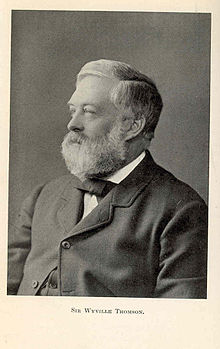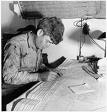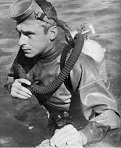











TLW's Oceanographerscope™ (Oceanographer Historyscope) |
By T.L. Winslow (TLW), the Historyscoper™ |
© Copyright by T.L. Winslow. All Rights Reserved. |
Original Pub. Date: Jan. 7, 2017. Last Update: Feb. 12, 2018. |
Westerners are not only known as history ignoramuses, but double dumbass history ignoramuses when it comes to oceanography and oceanographer history. Since I'm the one-and-only Historyscoper (tm), let me quickly bring you up to speed before you dive into my Master Historyscope.

In 1855 Am. oceanographer Matthew Fontaine Maury (1806-73) pub. The Physical Geography of the Sea, becoming the first textbook of modern oceanography, causing him to become known as "the Father of Modern Oceanography and Naval Meteorology", "Pathfinder of the Seas", and "Scientist of the Seas".

On Dec. 23, 1872 after discovering the oceanic circulation in 1868-9 and proving the existence of animal life down to 650 fathoms, allowing him to talk the Royal Navy into it, the British ship HMS Challenger sets out on a 3.5-year round-the-world expedition from Portsmouth in the Challenger to study and map the oceans, led by Scottish marine zoologist Charles Wyville Thomson (nee Wyville Thomas Charles Thomson) (1830-82), traveling 70K nautical mi. and cataloging 4K previously unknown species, resulting in the 1873 pub. of "The Depths of the Sea", "the greatest advance in the knowledge of our planet since the celebrated discoveries of the fifteenth and sixteenth centuries" (John Murray), helping found the science of oceanography, becoming a celeb and getting knighted by Queen Vicky.
In 1903 the Scripps Inst. of Oceanography is founded in San Diego, Calif.


In 1925 a German oceanographic expedition sent to recover gold to repay the war debt uses sonar to discover the 10K-mi. Mid-Atlantic Ridge, which runs from the tip of South Am. to Iceland to the Antarctic Circle; German oceanographer Georg Adolf Otto Wust (Wüst) (1890-1977) becomes chief oceanographer on the research vessel Meteor, developing the idea of the ocean's core layer. In 1953 Am. oceanographer William Maurice "Doc" Ewing (1906-74) discovers the great rift running down the middle of the Mid-Atlantic Ridge.
In 1930 the Woods Hole Oceanographic Inst. (WHOI) is founded in Woods Hole, Mass.; meanwhile 20-y.-o. Jacques Cousteau (b. 1910) joins the French Naval Academy; in 1936 he begins diving using goggles.

In 1942 Harald Ulrik Sverdrup (1888-1957), Martin W. Johnson, and Richard H. Fleming pub. The Oceans: Their Physics, Chemistry and General Biology, which becomes the std. textbook of oceanography; 2nd ed. 1970.


In winter 1942/3 the Aqua-Lung is invented in Paris by French navy diver lt. Jacques-Yves Cousteau (1910-97) and French engineer Emile Gagnan (1900-79), becoming the first SCUBA (self-contained underwater breathing apparatus) to reach worldwide commercial success.
In spring 2000 the Internat. Hydrographic Org. defines the Southern (Antarctic) (Austral) Ocean (20.327M sq km) as all water below 60 deg. S, making it the 4th biggest of the five oceans after the Pacific, Atlantic, and Indian, and bigger than the Arctic.